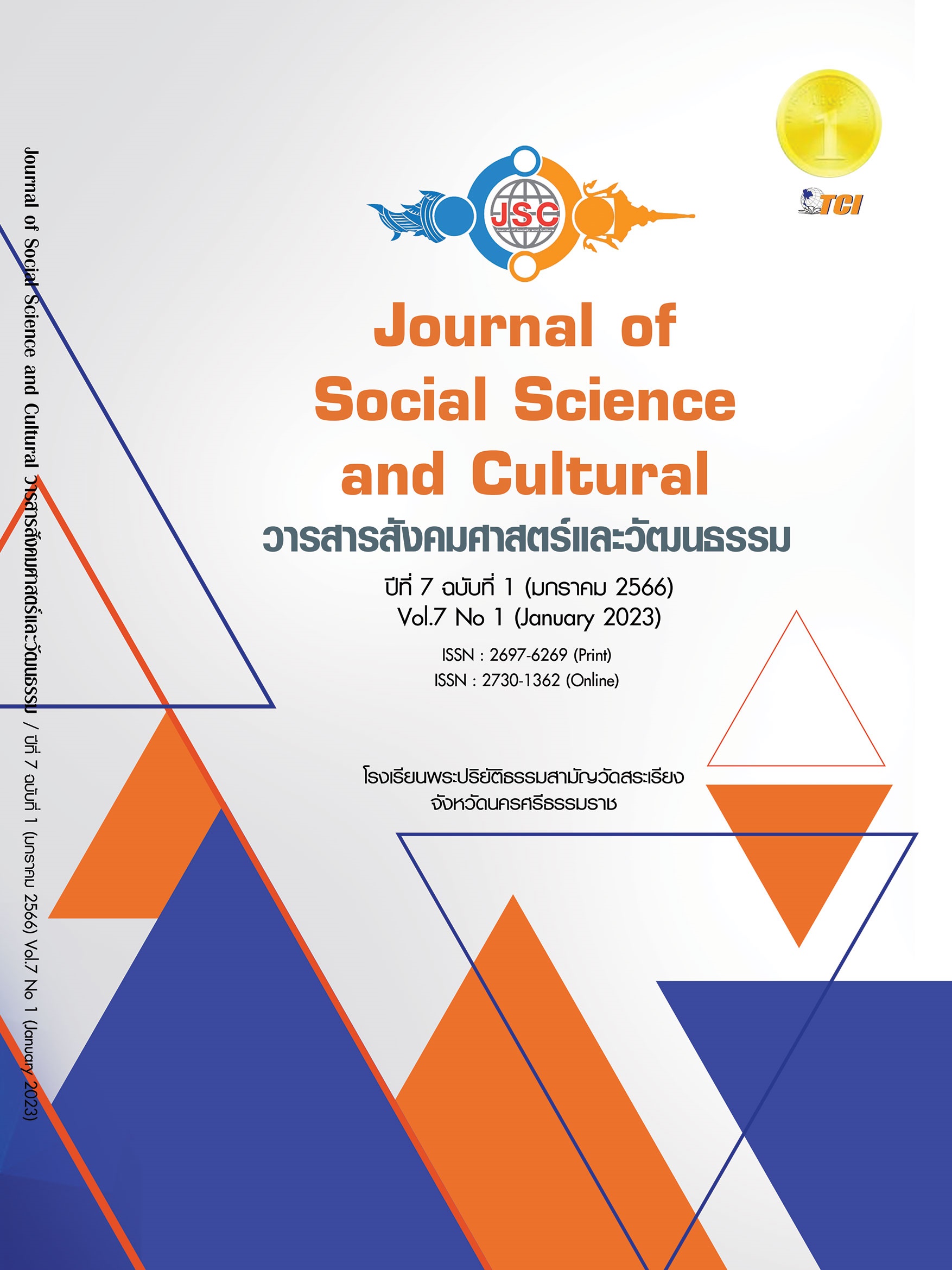DEVELOPMENT OF PERSONNEL PARTICIPATION TOWARDS THE UNIVERSITY'S GREEN CRITERIA OF RAJAMANGALA UNIVERSITY OF TECHNOLOGY THANYABURI
Main Article Content
Abstract
This research aimed to 1) to study the participation in conduct according to the green university criteria, 2) to study the factors that influence participation in conduct according to the green university criteria and 3) to study the ways to create participation in conduct according to the green university criteria of professors, staff, and students at the Rajamangala University of Technology Thanyaburi. This is quantitative research using questionnaires to collect data from 400 samples divided into 2 groups: 300 students and 100 personnel of Rajamangala University of Technology Thanyaburi. Purposive sampling was used. The statistics used consisted of percentage, mean, t-test, One Way Analysis of Variance, and Multiple Linear Regression Analysis. The results showed that 1) Students and staff participate in conduct that aligns with the green university criteria, in some instances, when considered by aspect, it is found that the waste management aspect has the highest average score, followed by energy and climate change, and water management in order. 2) Individual factors, knowledge and perceptions towards adhering to green university criteria, have a significant statistical impact on participation in conduct that aligns with the green university criteria, with a level of .05. and 3) Creating participation in green university criteria should involve setting and planning for promoting understanding and knowledge about the criteria, raising awareness among students about reducing unnecessary electricity usage, implementing efficient waste management systems within the university, and encouraging the use of public transportation.
Article Details
References
จักเรศ เมตตะธำรง และคณะ. (2565). การวิเคราะห์เส้นทางของปัจจัยการบริหารจัดการภายในมหาวิทยาลัยที่ส่งผลต่อการเป็นมหาวิทยาลัยสีเขียวตามแนวคิดของนักศึกษามหาวิทยาลัยเทคโนโลยีราชมงคลอีสาน วิทยาเขตสกลนครด้วยวิธีสมการโครงสร้างแบบกำลังสองน้อยที่สุดบางส่วน. วารสารเทคโนโลยีสุรนารี, 17(1), 1-19.
ซูไบดี โตะโมะ และคณะ. (2563). การรับรู้และการมีส่วนร่วมของบุคลากรและนักศึกษามหาวิทยาลัยราชภัฏยะลาต่อการจัดการสิ่งแวดล้อมสู่การเป็นมหาวิทยาลัยสีเขียว. ใน รายงานการวิจัย. มหาวิทยาลัยราชภัฏยะลา.
ธวัชชัย บัวขาว และ มนสิชา เพชรานนท์. (2555). การกำหนดนโยบายและแนวทางปฏิบัติสู่มหาวิทยาลัยสีเขียว กรณีศึกษา : มหาวิทยาลัยทักษิณ วิทยาเขตพัทลุง. วารสารวิชาการ คณะสถาปัตยกรรมศาสตร์ มหาวิทยาลัยเทคโนโลยีพระจอมเกล้าเจ้าคุณทหารลาดกระบัง, 4(1), 40-55.
บุญชม ศรีสะอาด. (2556). วิธีการทางสถิติสำหรับการวิจัย เล่ม 2. กรุงเทพมหานคร: สุวีริยาการพิมพ์.
บุษยมาส ชื่นเย็น. (2564). การศึกษาการมีส่วนร่วมของนักศึกษาในการเป็นมหาวิทยาลัยสีเขียวของมหาวิทยาลัยราชภัฏอุบลราชธานี. วารสารการจัดการและการพัฒนา มหาวิทยาลัยราชภัฏอุบลราชธานี, 8(2), 51-63.
มหาวิทยาลัยเทคโนโลยีพระจอมเกล้าธนบุรี. (2562). มจธ. มหาวิทยาลัยสีเขียวอันดับ 6 ของไทย. เรียกใช้เมื่อ 9 ธันวาคม 2562 จาก https://pr.kmutt.ac.th/pr2/award-news
โมทนา สิทธิพิทักษ์ และคณะ. (2564). ปัจจัยแห่งความสำเร็จของมหาวิทยาลัยสีเขียวที่ยั่งยืน. วารสารครุศาสตร์จุฬาลงกรณ์มหาวิทยาลัย, 49(2), 1-10.
สำนักงานคณะกรรมการการอุดมศึกษา ,กระทรวงศึกษาธิการ. (2550). กรอบแผนอุดมศึกษาระยะยาว 15 ปี ฉบับที่ 2 (พ.ศ. 2551-2564). กรุงเทพมหานคร: โรงพิมพ์แห่งจุฬาลงกรณ์มหาวิทยาลัย.
สิรินาฏ ไชยตา. (2561). การศึกษาปัจจัยที่ส่งผลต่อการดำเนินการสู่ความเป็นมหาวิทยาลัยสีเขียวของมหาวิทยาลัย เทคโนโลยีราชมงคลอีสานนครราชสีมา. ใน วิทยานิพนธ์บริหารธุรกิจมหาบัณฑิต สาขาบริหารธุรกิจ. มหาวิทยาลัยเทคโนโลยีราชมงคลอีสานนครราชสีมา.
Universitas Indonesia. (2016). UI green metric world university ranking. Retrieved December 9 , 2019, from http://www. greenmetric.ui.ac.id/id/page/ranking_2015


